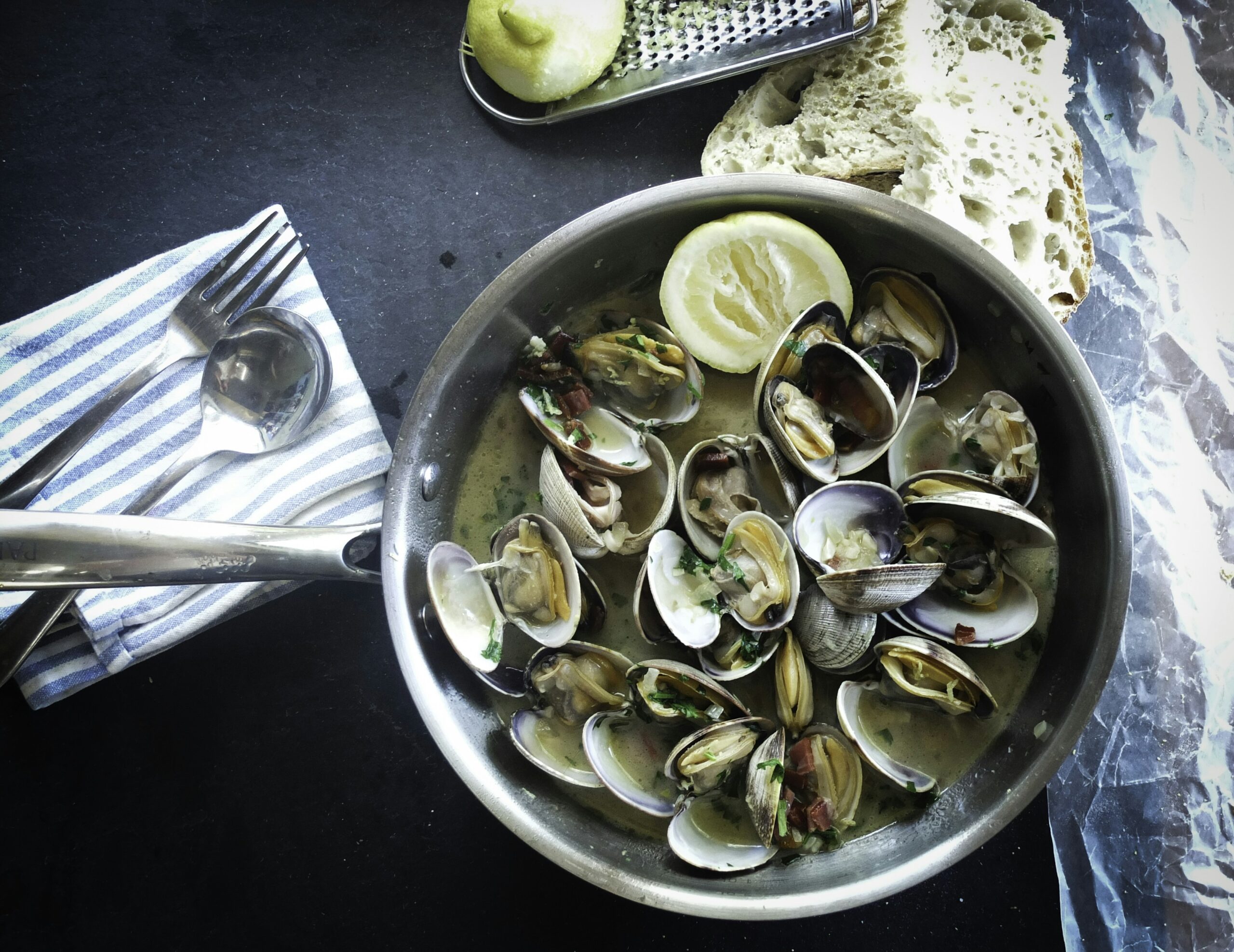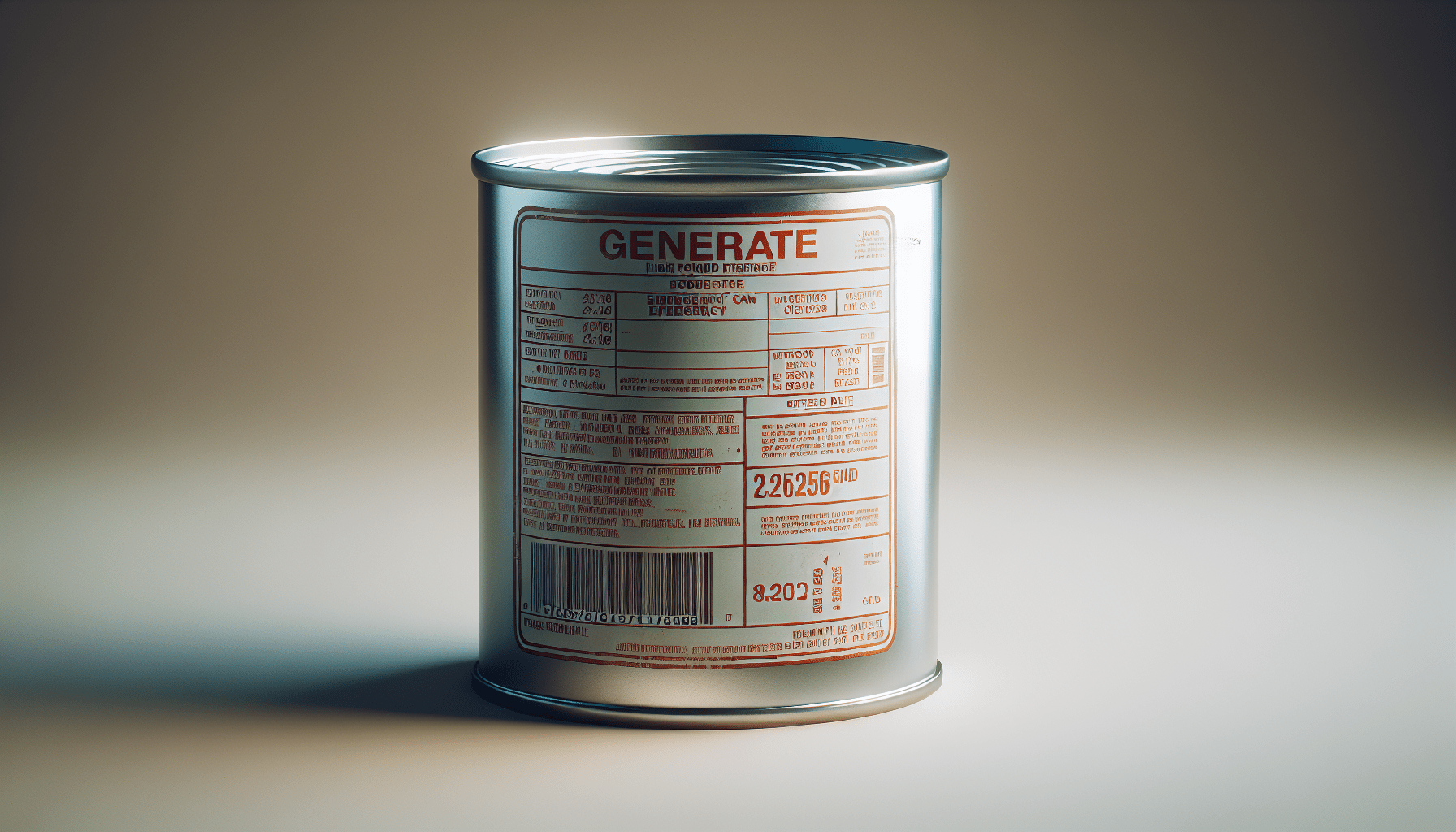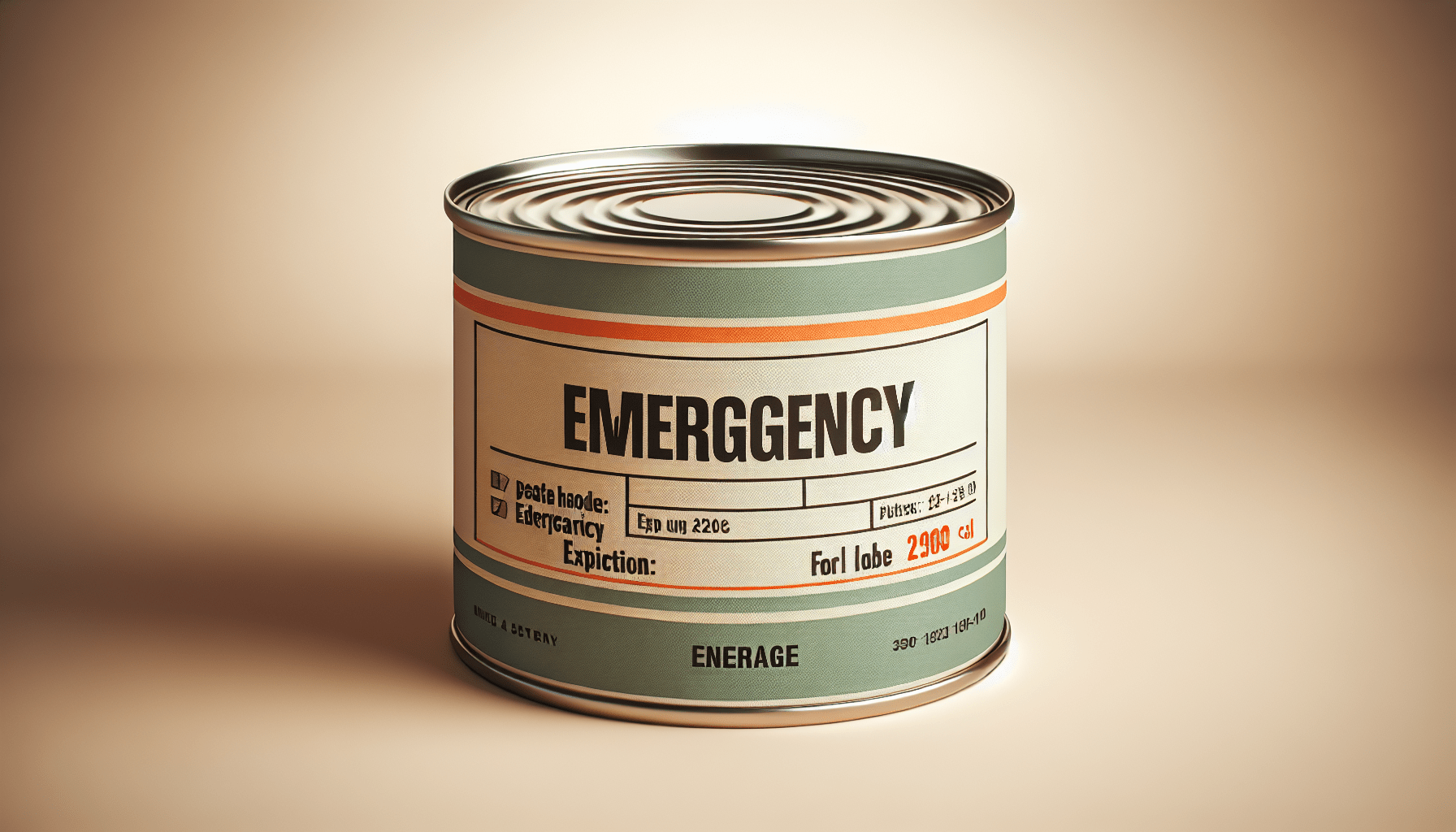Have you ever wondered how long those emergency food supplies that you stash away will actually last? It’s a practical question that many people ponder, especially when preparing for unforeseen circumstances like natural disasters or unexpected crises. Having a dependable supply of emergency food can provide peace of mind in uncertain times, but understanding the shelf life of these stocks is crucial to ensure they remain safe and nutritious when you need them most.

Understanding Shelf Life
Before delving into the specifics of various emergency foods, it’s essential to grasp what shelf life actually means. The term “shelf life” refers to the maximum time food products are considered safe to consume, retaining their ideal taste, texture, nutrition, and quality under specified storage conditions.
Shelf life varies drastically among different types of food. While commercially prepared canned goods can last several years, fresh produce may only stay good for a few days. Emergency foods are specifically designed to have longer shelf lives, often spanning multiple years, making them more reliable for long-term storage.
Factors Influencing Shelf Life
Several factors determine the shelf life of emergency food. Understanding these can help you maximize the longevity of your food stores.
Type of Food
Different foods have different shelf lives. For example, grains and legumes can last for decades under the right conditions, while dairy products or certain vegetables may deteriorate faster.
Packaging
The packaging plays a critical role in determining the shelf life of emergency food. Vacuum-sealed packaging, Mylar bags, and cans are some of the best options for extending the shelf life of food, as these methods minimize exposure to air, moisture, and light.
Storage Conditions
Proper storage conditions are crucial for maximizing the shelf life of your emergency food. This generally means a cool, dark, and dry place. Temperature fluctuations, exposure to light, and high humidity can all significantly shorten the shelf life.
Preservatives and Additives
Often, emergency foods contain preservatives that extend their shelf life. However, the benefit of longer shelf life should be balanced against any potential health concerns associated with consuming preservatives and additives over extended periods.
Types of Emergency Food and Their Shelf Lives
Knowing the specifics about different kinds of emergency food can help you make more informed decisions about what to store. Here is a closer look at some common categories:
Freeze-Dried Foods
Freeze-dried foods can last a very long time, often between 25 to 30 years when stored properly. The freeze-drying process removes moisture while preserving flavor and nutrition, making them ideal for long-term storage.
| Food Type | Shelf Life |
|---|---|
| Freeze-Dried Fruits | 25-30 years |
| Freeze-Dried Dairy | 20-25 years |
| Freeze-Dried Meals | 25-30 years |
Dehydrated Foods
Dehydrated foods, though not as long-lasting as freeze-dried varieties, still offer impressive shelf lives:
| Food Type | Shelf Life |
|---|---|
| Dehydrated Vegetables | 10-15 years |
| Dehydrated Meats | 10-15 years |
| Dehydrated Meals | 10-15 years |
Canned Goods
Canned foods are another excellent choice for emergency supplies. These can last for several years, but the exact shelf life depends on the type of food and storage conditions.
| Food Type | Shelf Life |
|---|---|
| Canned Vegetables | 2-5 years |
| Canned Meats | 3-5 years |
| Canned Soups and Stews | 2-5 years |
MREs (Meals Ready-to-Eat)
Typically used in military settings, MREs can last for about 3 to 5 years at normal temperatures, but their shelf life significantly extends to around 10 years when stored at cooler temperatures.
| Food Type | Shelf Life |
|---|---|
| MREs | 3-5 years |
Grains, Beans, and Legumes
Staples such as grains and legumes are highly durable and can last for decades.
| Food Type | Shelf Life |
|---|---|
| Rice | 25-30 years |
| Wheat | 25-30 years |
| Beans (various types) | 25-30 years |
Tips for Extending Shelf Life
To ensure you get the maximum shelf life from your emergency food, consider the following tips:
Store in a Cool, Dark Place
Elevated temperatures can cause food to spoil faster. Aim for a storage temperature below 75 degrees Fahrenheit (24 degrees Celsius). Even better, if you can keep it at 50 degrees Fahrenheit (10 degrees Celsius) or lower, you can significantly extend the shelf life of your food.
Use Proper Containers
Utilize containers that limit exposure to air, moisture, and light. Vacuum-sealed bags, Mylar bags with oxygen absorbers, and tightly sealed glass jars are excellent choices.
Rotate Stock
First In, First Out (FIFO) is a good rule to follow. This means you should use the oldest items you have first. Regularly checking and rotating your stock ensures that you’re not left with spoiled food when you need it most.
Avoid Temperature Fluctuations
Consistent temperatures are key. Fluctuations can cause condensation inside the food packaging, leading to spoilage.
Label Clearly
Always label your emergency food supplies with the date of purchase and any expiration dates. This helps you keep track of what needs to be used or replaced.

Signs Your Emergency Food Has Gone Bad
Despite your best efforts, sometimes food will go bad. Knowing the signs can save you from consuming unsafe or spoiled food.
Appearance
Any changes in color, the presence of mold, or strange residues are strong indicators that the food is no longer safe to consume.
Smell
If the food has developed an off or sour smell, it’s best to err on the side of caution and discard it.
Texture
A significant change in texture, such as the food becoming mushy or overly hard, is another indicator that it might have gone bad.
Taste
If, upon sampling, the food tastes off, bitter, or just not right, it’s best to avoid consuming it further.
Nutritional Considerations
When storing emergency food, it’s vital to account for nutritional needs. You can survive on low-nutrient foods for a short period, but for long-term scenarios, balanced nutrition becomes crucial.
Macronutrients
Ensure that your emergency food provides a balanced mix of carbohydrates, proteins, and fats. This helps maintain energy levels and overall health.
Micronutrients
Vitamins and minerals are just as important. Look for foods that supply essential micronutrients such as vitamin C, calcium, and iron. Including a multivitamin in your emergency supplies can be a practical way to meet these needs.
Hydration
Many emergency foods require water for preparation, especially freeze-dried options. Ensure you have an adequate and clean supply of water stored alongside your emergency food.

Emergency Food Kit Essentials
Building a balanced emergency food kit can make a significant difference when an emergency strikes. Consider these essential components:
Staples
- Grains: Rice, quinoa, oats
- Legumes: Beans, lentils, peas
- Pasta: Various types for diversity
Proteins
- Canned Meat: Tuna, chicken, beef
- Plant-Based Proteins: Tofu, tempeh (shelf-stable varieties)
- Dried Meats: Jerky, summer sausage
Fruits and Vegetables
- Canned Fruits and Vegetables: Peaches, beans, tomatoes
- Dehydrated or Freeze-Dried Options: Mixed vegetables, banana chips
Dairy Alternatives
- Powdered Milk: Long shelf life, versatile
- Shelf-Stable Non-Dairy Milk: Soy, almond, oat milk
Miscellaneous
- Cooking Essentials: Salt, sugar, spices, baking soda
- Comfort Foods: Chocolate, candy, coffee, tea
Special Considerations for Dietary Restrictions
If you have specific dietary needs or restrictions, planning your emergency food supplies requires extra care:
Gluten-Free
- Substitute regular grains with rice, quinoa, or buckwheat.
- Choose canned and freeze-dried vegetables and proteins labeled gluten-free.
Vegan
- Focus on plant-based proteins like beans, lentils, and tofu.
- Store nutrient-rich vegetables and fruits for a balanced diet.
Low-Sodium
- Opt for no-salt-added varieties in canned goods.
- Utilize herbs and spices to flavor food instead of relying on salt.
Allergies
- Read labels meticulously for potential allergens.
- Store safe alternatives and avoid cross-contamination.

Emergency Food Maintenance Checklist
Keeping your emergency food supply ready for action requires regular maintenance. Here’s a handy checklist to ensure your stocks remain viable:
| Task | Frequency |
|---|---|
| Check Expiration Dates | Every 6 months |
| Rotate Stock (FIFO) | Every 6 months |
| Inspect Packaging for Damage | Every 3 months |
| Maintain Storage Conditions | Ongoing |
| Update Inventory List | Every 6 months |
| Restock as Necessary | Annually or as used |
Common Myths About Emergency Food
Let’s debunk some common misconceptions:
Myth 1: Emergency Food Lasts Forever
While many emergency foods are designed for long-term storage, they do have a finite shelf life. Regular checks and proper storage conditions are essential.
Myth 2: Canned Food Expiration Dates are Rigid
The “best by” dates on cans often indicate peak quality rather than safety. Canned goods can be safe beyond their expiration dates if stored properly, though their taste and nutritional value might diminish.
Myth 3: Dehydrated Foods are Nutritionally Inferior
Modern dehydration methods retain much of the food’s nutritional value. Dehydrated foods can be an excellent addition to your emergency stockpile.

Conclusion
Ensuring your emergency food supplies are both plentiful and of high quality requires careful planning and maintenance. The shelf life of emergency food varies based on type, packaging, storage conditions, and other factors, but with the right approach, you can significantly extend their viability. Staying informed about proper storage methods, regularly checking your supplies, and understanding the signs of spoilage will keep you prepared for any emergency.
Do you feel more confident now in managing your emergency food supplies? Remember, preparation today ensures peace of mind tomorrow.

